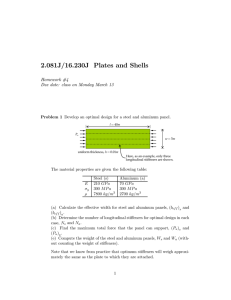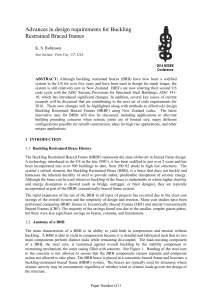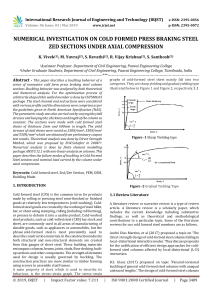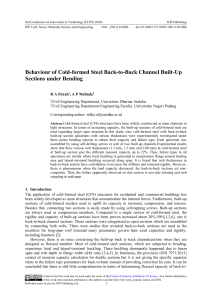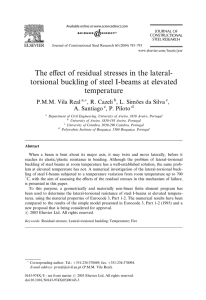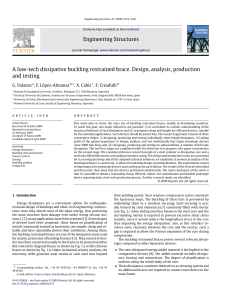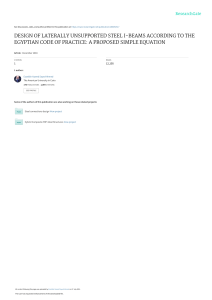Full-scale cyclic tests of a novel buckling-restrained brace
advertisement
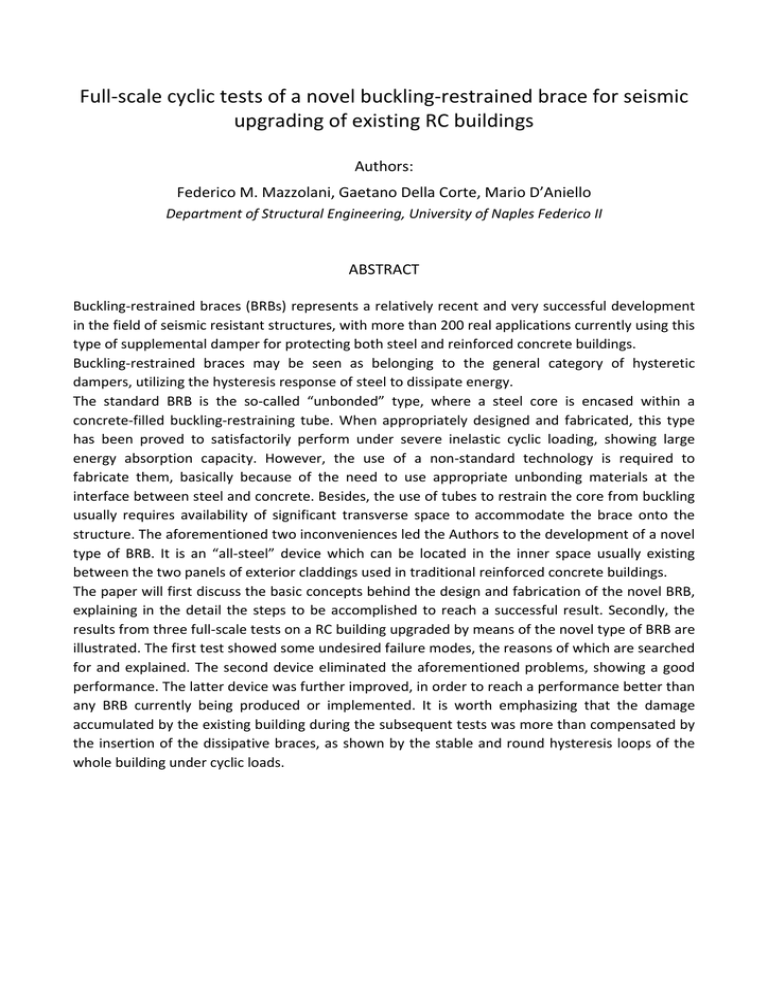
Full‐scale cyclic tests of a novel buckling‐restrained brace for seismic upgrading of existing RC buildings Authors: Federico M. Mazzolani, Gaetano Della Corte, Mario D’Aniello Department of Structural Engineering, University of Naples Federico II ABSTRACT Buckling‐restrained braces (BRBs) represents a relatively recent and very successful development in the field of seismic resistant structures, with more than 200 real applications currently using this type of supplemental damper for protecting both steel and reinforced concrete buildings. Buckling‐restrained braces may be seen as belonging to the general category of hysteretic dampers, utilizing the hysteresis response of steel to dissipate energy. The standard BRB is the so‐called “unbonded” type, where a steel core is encased within a concrete‐filled buckling‐restraining tube. When appropriately designed and fabricated, this type has been proved to satisfactorily perform under severe inelastic cyclic loading, showing large energy absorption capacity. However, the use of a non‐standard technology is required to fabricate them, basically because of the need to use appropriate unbonding materials at the interface between steel and concrete. Besides, the use of tubes to restrain the core from buckling usually requires availability of significant transverse space to accommodate the brace onto the structure. The aforementioned two inconveniences led the Authors to the development of a novel type of BRB. It is an “all‐steel” device which can be located in the inner space usually existing between the two panels of exterior claddings used in traditional reinforced concrete buildings. The paper will first discuss the basic concepts behind the design and fabrication of the novel BRB, explaining in the detail the steps to be accomplished to reach a successful result. Secondly, the results from three full‐scale tests on a RC building upgraded by means of the novel type of BRB are illustrated. The first test showed some undesired failure modes, the reasons of which are searched for and explained. The second device eliminated the aforementioned problems, showing a good performance. The latter device was further improved, in order to reach a performance better than any BRB currently being produced or implemented. It is worth emphasizing that the damage accumulated by the existing building during the subsequent tests was more than compensated by the insertion of the dissipative braces, as shown by the stable and round hysteresis loops of the whole building under cyclic loads.
